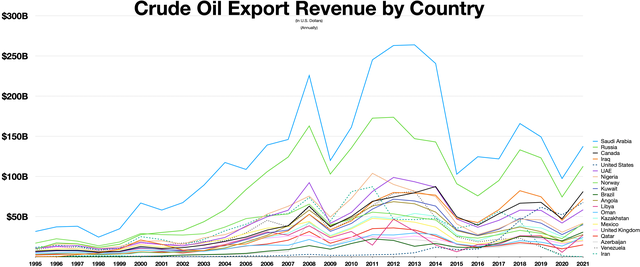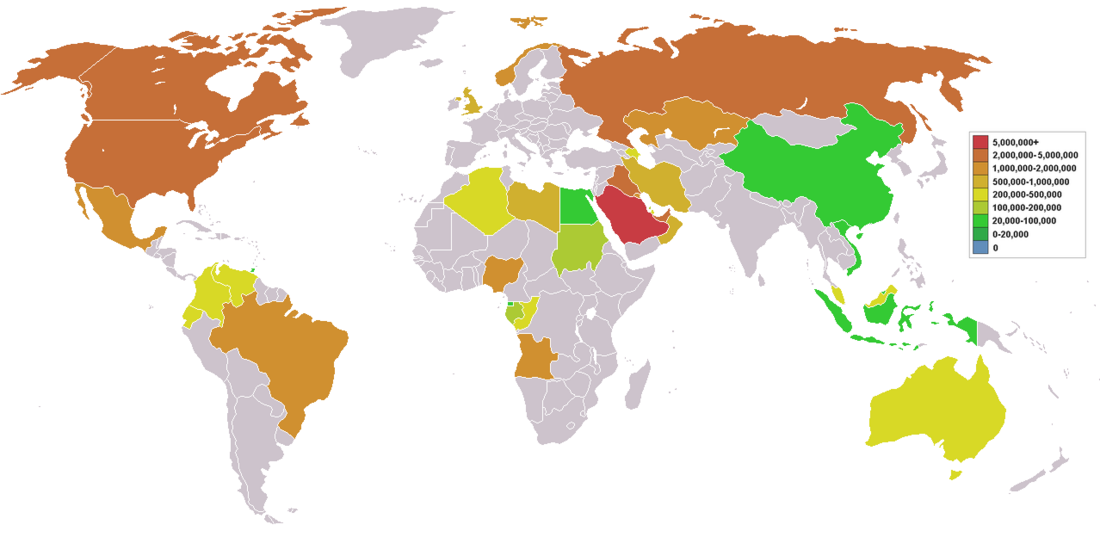Top Qs
Timeline
Chat
Perspective
List of countries by oil exports
From Wikipedia, the free encyclopedia
Remove ads
Remove ads
This is a list of oil-producing countries by oil exports based on data for 2022 by CEIC. Oil in this list refers to base crude oil only, and not refined petroleum products such as gasoline, diesel and airplane fuel.


In 2022, Saudi Arabia was the largest exporter of petroleum, followed by Russia and Iraq. Other major exporters of petroleum in that year included the United States, Canada and United Arab Emirates. In 2022, Saudi Arabia also had the largest oil export value in US dollar terms by far.
Many of these countries also import oil, and some import more oil than they export, this is known as an oil export deficit.
In contrast, when a country exports more oil than it imports, it is known as an oil export surplus. The second table in this page shows which countries have the largest oil export surplus in US dollar terms. Russia was the world leader in 2022 for this category.
Remove ads
List
Remove ads
Oil export revenues
Academic contributors have written about differences in petroleum revenue management in various countries. Many scholars see the natural resource wealth in some countries as a blessing, while others have referred to it as a natural resource curse.[3] A vast body of resource curse literature has studied the role of governance regimes, legal frameworks and political risk in building an economy based on natural resource exploitation.[4][5][6] However, whether it is seen as a blessing or a curse, the recent political decisions regarding the future of petroleum production in many countries were given an extractivist direction[clarification needed], thus also granting a status quo[clarification needed] to the exploitation of natural resources.[7] The PRIX index forecasts the effect of political developments on exports from major petroleum-producing countries.[8]
Remove ads
By oil export surplus
A country's oil export surplus can be calculated by subtracting the value of its oil imports from the value of its oil exports. Countries with oil export surpluses tend to be more energy independent than those with oil export deficits (importing more oil than they export).
See also
References
Wikiwand - on
Seamless Wikipedia browsing. On steroids.
Remove ads
